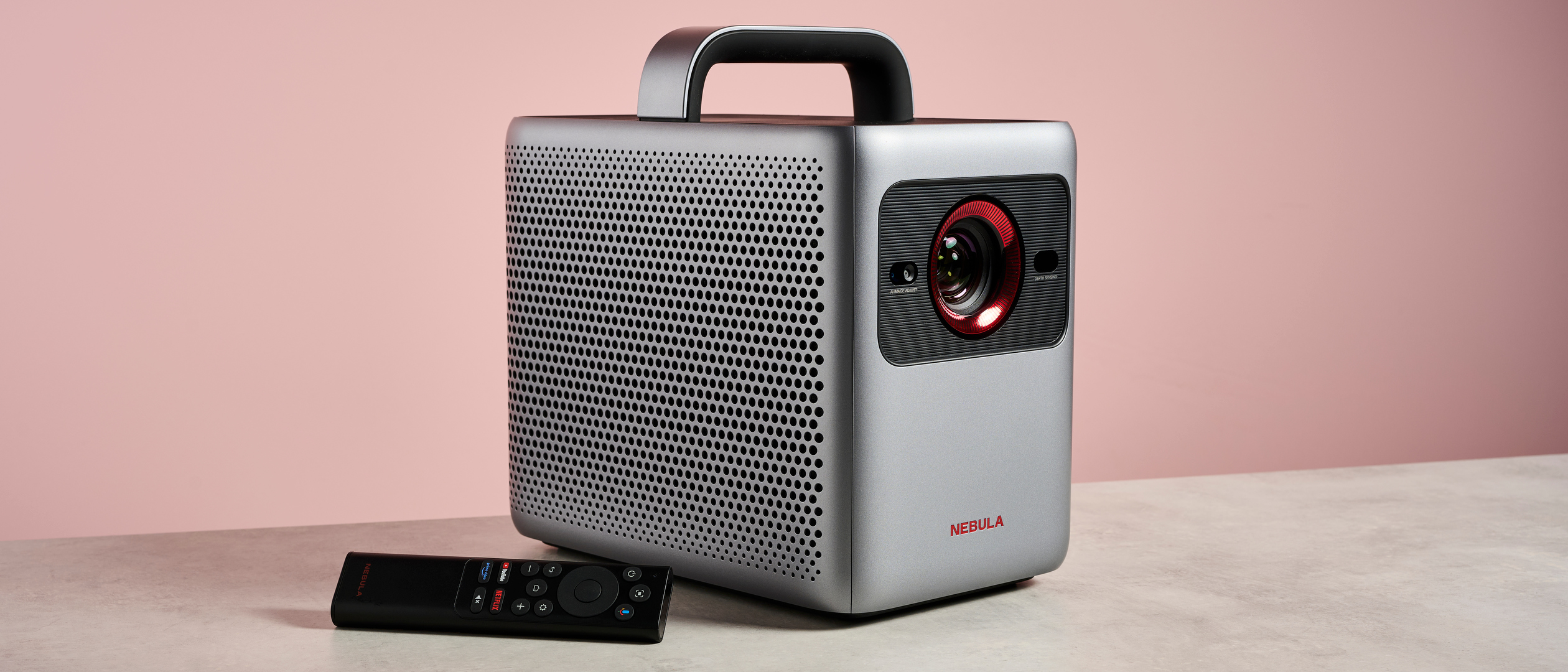TechRadar Verdict
The Anker Nebula Cosmos 4K SE delivers beautiful details and high-quality sound, but the lack of contrast spoils the magic in darker scenes. Distance limitations mean that you’re limited to a maximum of 60 inches of screen size unless you’ve got a spare 7.8 ft / 2.5m of space to separate the projector and screen. Google TV OS offers access to popular apps and YouTube and is easy to control with the backlit remote and Nebula Connect app. Overall, I loved the Anker Nebula Cosmos 4K SE, and I’m running out of excuses not to buy one for myself.
Pros
- +
Google TV built-in
- +
Impressive level of detail
- +
Capable of stunningly bright and clear visuals
Cons
- -
Disappointing contrast
- -
Poor image quality in daylight, despite claims
- -
Large space needed for 60-inch+ screen size
Why you can trust TechRadar
Anker Nebula Cosmos 4K SE: two-minute review
The Anker Nebula Cosmos 4K SE is a laser and LED smart projector capable of projecting 4K Dolby-Vision-enhanced imagery up to 200 inches. It was first released in the US, followed by the UK in August and September 2024 for a list price of $1,299.99 / £1,299.99.
It's cheaper than its predecessor, the Anker Nebula Cosmos 4K, which has an extra 400 ANSI lumens of brightness, and a full laser light source, compared to the 4K SEs laser and LED HybridBeam. The Nebula Cosmos 4K SE has plenty to boast about though, with Google TV built-in, offering effortless access to popular streaming apps like Netflix and Disney+, and many other useful apps, as one would expect from Google. There’s decent support for external content too, with HDMI and USB-C ports making it simple to connect a disc drive or laptop.
The Nebula Cosmos 4K SE has a stated brightness of 1,800 ANSI lumens – this is some way short of most of the best 4K projectors. Our testing didn’t provide results to get excited about, with measurements taken including 122 nits peak brightness, which wasn’t radically different from the BenQ v5000i, and grayscale accuracy of 8, plus a color accuracy of 3.4.
Coverage of the UHDA-P3 color gamut came in at 88.9%, with BT.2020 reading 76.3%. The input lag measured up, with 35ms of lag in Game Mode Standard, and 18.5ms in Game Mode Extreme.

Real-time autofocus, auto keystone correction, and auto screen fit worked well when projected onto small targets, but I found I had to manually alter the four keystone points to get the image to sit centrally (just about) on my 100-inch screen. I could only watch at 60 inches, as I lacked the space to have the projector the required 7.8ft / 2.4 meters away from the screen. If you have your heart set on getting the full movie theatre experience without having to shell out on a house extension, I’d recommend taking a look at our pick of the Best ultra short throw projectors instead.
When it comes to the performance of the contrast and brightness when watching content, darker scenes in movies and TV shows with a dark aesthetic were plagued by pixelated grays where darker areas would otherwise be visible while watching on a TV. This isn’t entirely uncommon for projectors, as producing dense blacks is naturally difficult given how the image is generated, but I can’t say that it didn’t subtract from the otherwise fabulous viewing experience. Scenes in Damsel and Prometheus in particular showcased the Cosmos 4K SE’s ability to deliver stunningly vivid color and intricate details, no doubt thanks to the addition of Dolby Vision. This, along with the two built-in 15-watt Dolby-Audio-enabled speakers made watching movies and series with this projector a satisfyingly immersive experience. You can read further details about this in the Picture Quality section below.
In a nutshell, provided you have the space to achieve the screen size you want, you’re happy watching content in little more than a dim light, and you have the space to place this chonky example of a portable projector, I’d highly recommend the Nebula Cosmos 4K SE.
Sign up for breaking news, reviews, opinion, top tech deals, and more.
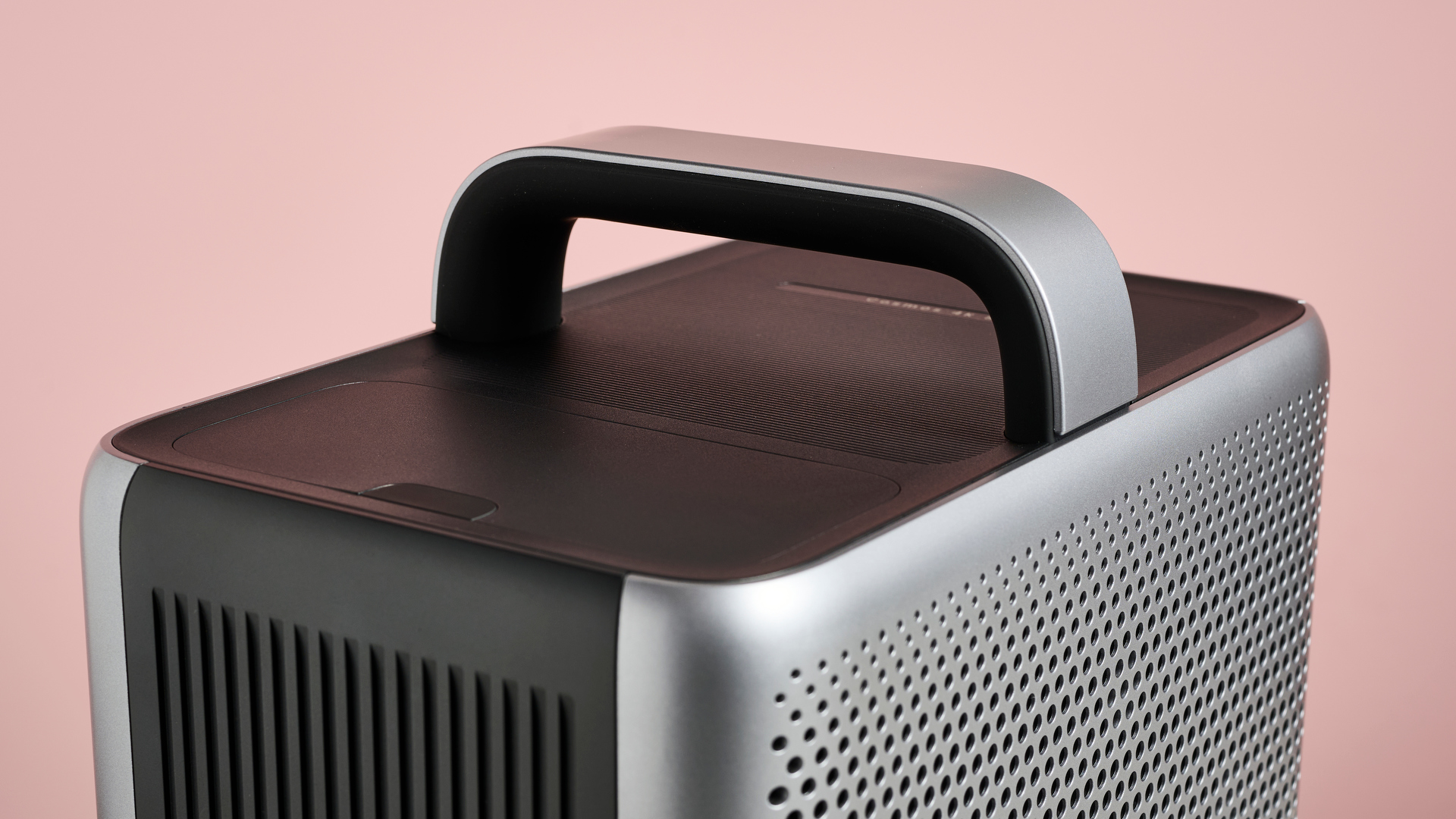
Anker Nebula Cosmos 4K SE review: price and availability
- List price: $1,299.99 / £1,299.99
- Available in the US and the UK
- Released in August / September 2024
The Nebula Cosmos 4K SE became available in the US in August 2024, followed by the UK in September 2024, at a list price of $1,299.99 / £1,299.99. Apart from the Amazon Prime Day sales, when it dropped to $999 / £999, which Anker matched on the Nebula website, the cost of the Nebula Cosmos 4K SE looks to have remained at its usual price. At the time of writing, the Cosmos 4K SE is not available in Australia.
While unlikely to be a spontaneous purchase at this price, the Nebula Cosmos 4K SE is still miles cheaper than all but one in our choice of the best 4K projectors.
Anker Nebula Cosmos 4K SE review: specs
Screen sizes supported | 20 – 200 inches |
Brightness (specified) | 1,800 ANSI Lumens |
HDR support | Yes, Dolby Vision |
Optical technology | HybridBeam (Laser+LED) |
4K | Yes |
Speaker | 15W ×2 (Dolby Audio) |
OS | Google TV |
Connections | Bluetooth, HDMI 2.1(eARC), HDMI 2.1, USB-A, AUX, AC-in |
Dimensions | 10.4 x 8.7 x 6.5 inches / 264 x 221 x 165mm |
Weight | 9.9 lb / 4.5kg |
Anker Nebula Cosmos 4K SE review: design and features
- Google TV built-in
- Large but technically portable
- Efficient auto-correction and calibration features
The Nebula Cosmos 4K SE just about classes as portable, though it is a bit of a chonk, weighing in at 4.5kg /9.9lb, and with dimensions of 10.4 x 8.7 x 6.5 inches / 264 x 221 x 165mm. I was able to pick it up and carry it about, but I had to be careful about it. It would be even more of a hassle if it wasn't for the helpful, and comfortable silicone inbuilt handle that protrudes from the top of the projector body.
This projector is solely mains-powered, with no built-in battery or compatible battery pack. So while you might be able to carry it outside, you'll need to have access to a suitable power outlet for al fresco viewing.
The Nebula Cosmos 4K SE uses its HybridBeam, which is a combo of laser and LED, to generate images with up to a specified 1,800 ANSI lumens of brightness. The auto screen adjustment, auto keystone, and autofocus features did a great job of projecting images that were rectangular and crisp for the most part, especially when projecting onto smaller targets, which for me in particular was the wall space next to my bed. However, I found I was limited to just 60 inches when trying to watch on my 100-inch screen. This forced me to make use of the four-point manual keystone correction, as the Cosmos 4K SE insisted on fixing the 60-inch projection to the upper-left corner of the screen each time, which looked all kinds of wrong. After some investigating, I learned that the 4K SE needs to be at least 7.8 feet / 2.4 meters away from the target to project at 90 inches or above. I was using the projector in quite a large room, so this seems fairly limiting.
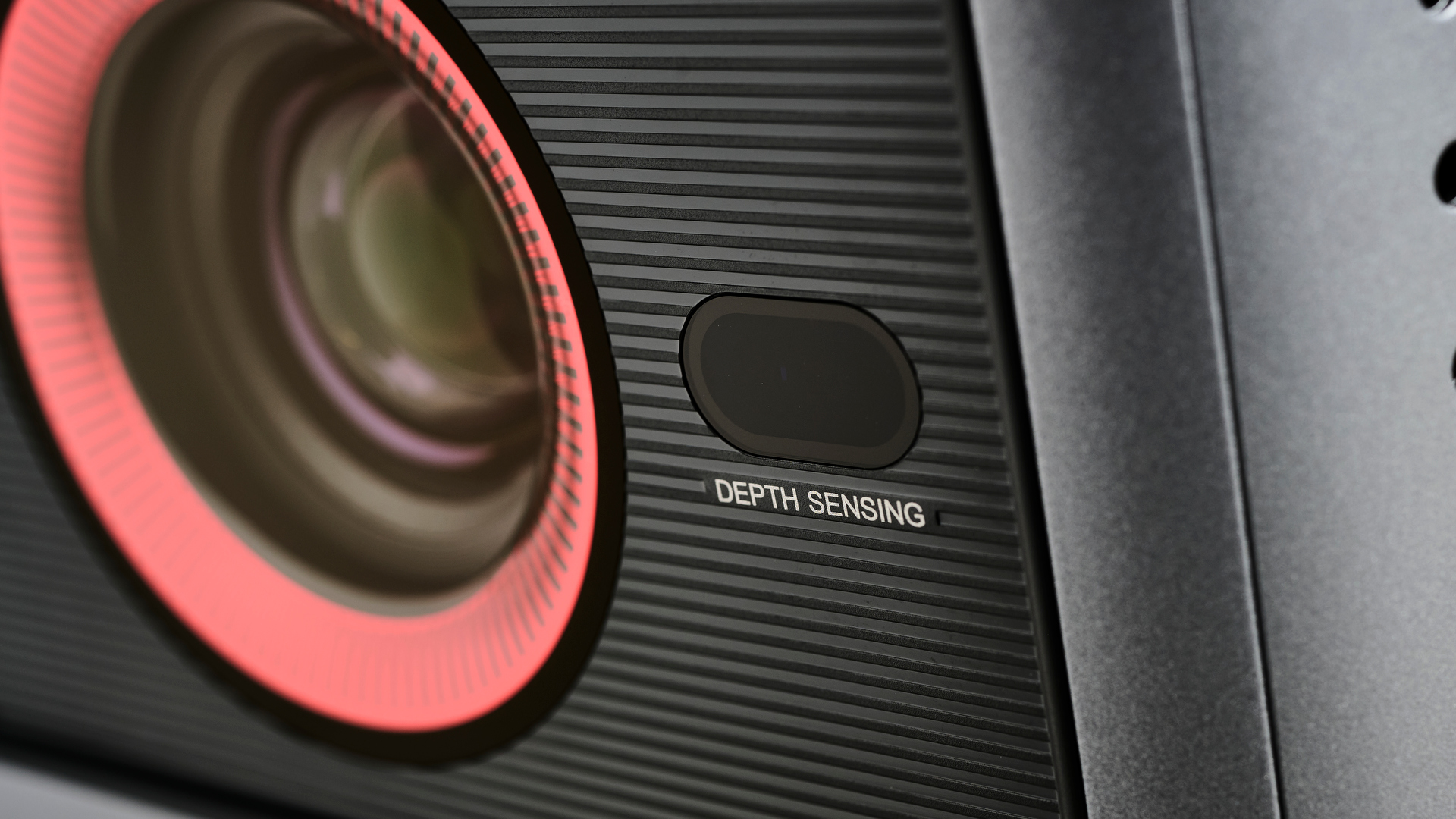
Anker claims that it’s possible to watch a 60-inch projection in a well-lit room with windows and indirect daylight, but unfortunately, I must disagree. The issues I’ve already mentioned regarding the contrast and black density were when watching in darkness. When I tried to watch with additional light sources any stronger than the colorful LED strips behind my TV, this contrast issue got worse, and anything more than very dim sunlight made it very difficult to see most of what was going on in whatever I was watching.
Having a light source in the room also plays havoc with the Wall Color Calibration feature, which is intended to alter the coloring of the projection so that it still looks correct regardless of the color of the wall you’re projecting against. I tested this out in our TechRadar music room, which is painted a deep teal color. When I tried this with some indirect sunlight coming from the small window far over to the right on the same wall I was projecting onto, the “color corrected” image had an off-putting blue tint to it. When I repeated the calibration with the lights off, it worked perfectly, and I was really impressed.

I found the Nebula Cosmos 4K SE easy to control thanks to the backlit remote control's handy voice assistant feature, as I could ask Google to whisk me straight to the content I wanted. The Nebula Connect app also worked well as a remote control, too.
I love that the Nebula Cosmos 4K SE comes with Google TV built-in, as in my experience it has proven to be the most efficient Android TV OS by far. As expected, it provides access to all of the popular streaming apps like Netflix, Disney Plus, Prime Video, and Apple TV, plus easy access to YouTube, naturally. It's simple to access content from external sources too, thanks to the USB-C input and the two HDMI ports, one of which is a HDMI 2.1 (eARC), supporting 4K visuals at 60 hertz, with lossless transmission.
When it comes to audio output, the Nebula Cosmos 4K SE has two built-in 15-watt speakers enabled with Dolby Audio. I didn't observe any issues with the sound quality during my testing, I was very satisfied with the quality. I would have picked up quite quickly if there were any issues that a typical user would notice – I've tested a lot of Bluetooth speakers in my time so I will spot from a mile off poor clarity or if the bass and treble are below par.
- Design score: 4/5
Anker Nebula Cosmos 4K SE review: picture quality
- Beautifully vivid color
- Disappointing lack of contrast
- Immersive cinematic experience
When I got my hands on the Cosmos 4K SE, I was really excited to try it out. I'd previously tested the Nebula Mars 3 Air back in my freelancing days, which I loved, so I was expecting big things from the 4K SE.
After letting it warm up for an hour, myself and my colleague James conducted tests to evaluate the projector's capabilities. The peak brightness, when viewing in Movie Mode and measured on a white 10% window pattern, was 122 nits in SDR, which isn't far off the peak brightness reading we got for the more expensive BenQ v5000i, and 119 in HDR, surpassing the reading we got for the BenQ.
The color performance figures that resulted from our testing didn't blow me away, but at this price and for casual viewing, I can forgive the Cosmos 4K SE for this. The projector achieved a Grayscale accuracy of 8, and a 3.4 for color accuracy, which was just a whisker off our target level of 3.
Coverage of the BT.2020 scored 76.3%, and the UHDA-P3 color gamut coverage was also nothing to shout about at 88.9% meaning that, although the colors were satisfyingly vivid, they weren't as rich and varied as those projected by the LG CineBeam Q, which gave an impressive reading of 98.7%. These test figures were obtained while viewing in HDR Movie Mode. The input lag in Game Mode Standard was 35ms, and in Gaming Mode Extreme was 18.5ms, which supports Anker's claims of the 4K SE being low latency with under 19ms of lag and should satisfy the majority of casual gamers.
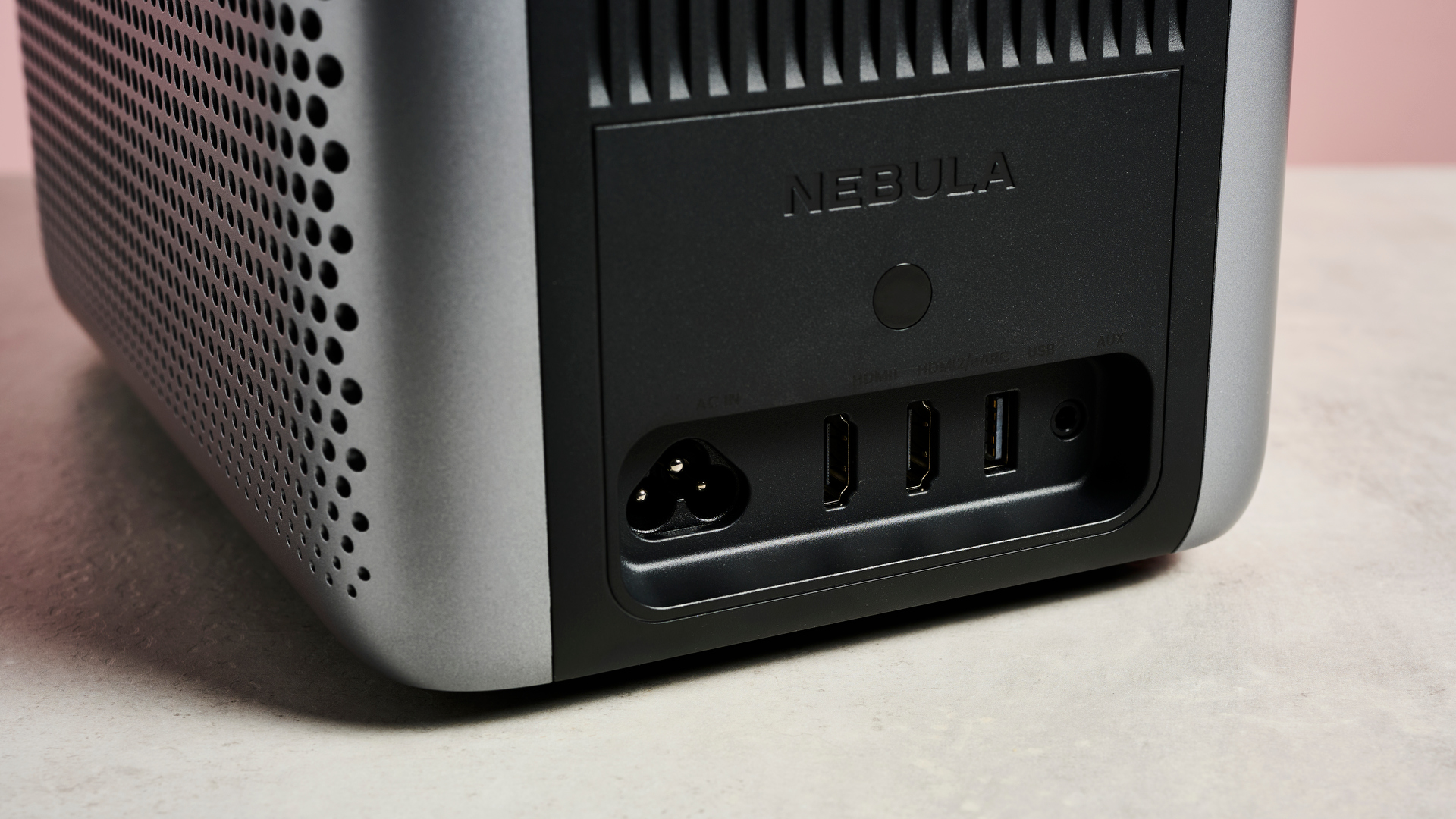
In terms of the brightness and contrast when viewing there were mixed results. In lighter scenes, the whites and colors were satisfyingly bright and dazzling, but the handling of the contrast in dark scenes left a lot to be desired. The first film I watched on the Cosmos 4K SE was Damsel on Netflix, starring Millie Bobby Brown. I can easily jump straight into all the positives, as I was stunned by the beautiful imagery that the projector delivered, but I'll get the negative out of the way first. It was clear fairly early on that there was a contrast issue.
When the main character Elodie enters a dark cave, all detail is lost around her, with stonework being replaced with grey pixelated sections. Achieving a quality deep black can prove difficult for projectors, especially those that don't possess full laser optical technology – with a 238:1 contrast ratio reading from the Cosmos 4K SE, it’s hardly surprising that it didn’t perform brilliantly in this area. Aside from this, there were so many scenes that took advantage of the projector's strengths, likely due to the presence of Dolby Vision. The scenes involving the luminescent grubs and the crystal caves were visually stunning, with the vivid colors and clarity making Damsel a delight to watch.
During the opening sequence of Prometheus, the level of brightness was impressive, as was the color density. The delicate details on the spaceship as it came in to land were visible and clear, as were the pores and veins on the Engineer's face. The level of intricacy in the DNA scenes when the strands were getting affected by the black pathogen highly impressed me too. The scene that really caught my attention, though, was when David has a drop of Chemical A0-3959X.91 on the tip of his finger. The close-up shots of this were visually stunning, so much so that I started to calculate quite how I could incorporate a projector screen into my living room on a permanent basis. Despite the darker scenes in Maleficent and Damsel noticeably lacking contrast, similar scenes appear to be handled better in Prometheus; they still weren't perfect, but darker details were more visible.

Despite my undeniable admiration of the Nebula Cosmos 4K SE, I wouldn't recommend it to anyone who regularly enjoys programs with a darker aesthetic. Series like Marvel's Daredevil take a real hit due to the lack of good contrast, making the scenes appear grainy and low-quality.
In Avengers: Age of Ultron, playback was smooth during intense fight scenes, with the images remaining crisp and high quality, despite the fast movement. The detail is fantastic once again, with the intricate weave of the fabric of Hawk Eye's suit clearly visible.
Despite my undeniable admiration of the Nebula Cosmos 4K SE, I wouldn't recommend it to anyone who regularly enjoys programs with a darker aesthetic, even when watching in the dark. Series such as Marvel's Daredevil take a real hit due to the lack of good contrast, making the scenes appear grainy and low-quality, which is a real shame considering the projector's fabulous performance in other areas.
- Picture quality score: 4/5
Anker Nebula Cosmos 4K SE review: value
- Good picture quality for the price
- Delivers a satisfying at-home cinema experience
- Uses Laser and LED hybrid optical technology
At $1,299.99 / £1,299.99, the Nebula Cosmos 4K SE is $400 / £400 cheaper than the previous model, the Nebula Cosmos 4K, despite the 4K SE having a large projection range, Google TV built in, and Dolby Vision. This price difference is likely due to the 400 additional ANSI lumens and, more importantly, due to the original 4K utilizing a laser light source, compared to the 4K SE's laser and LED HybridBeam, which could explain its lackluster brightness.
Overall, the viewing experience was fantastic when in a dimly lit room, and the sound quality was spot on. It was like having a pop-up cinema, with beautifully vivid colors and no problems with fast-paced scenes. The downsides can't be ignored, however, with a lack of contrast in some darker scenes when watching in the dark, and a distractingly bad lack of contrast and brightness issues when watching in the light, despite viewing at the projection size that Anker claims would be visible in a well-lit environment.
While it's pretty chunky, and not exactly an attractive addition to the decor unless it's situated in a casual TV and gaming den, it feels suitably robust for the price. While the size and weight initially made me question its apparent portability, this weight pales in comparison to other 4K projectors such as the Samsung The Premiere 9, and the carry handle definitely makes moving it about a simpler task. If the Nebula Cosmos 4K SE might upset your Feng Shui, then fear not, as more attractive alternatives are available, such as the LG CineBeam Q, which you can learn a little more about in the Also Consider section below.
- Value score: 4/5
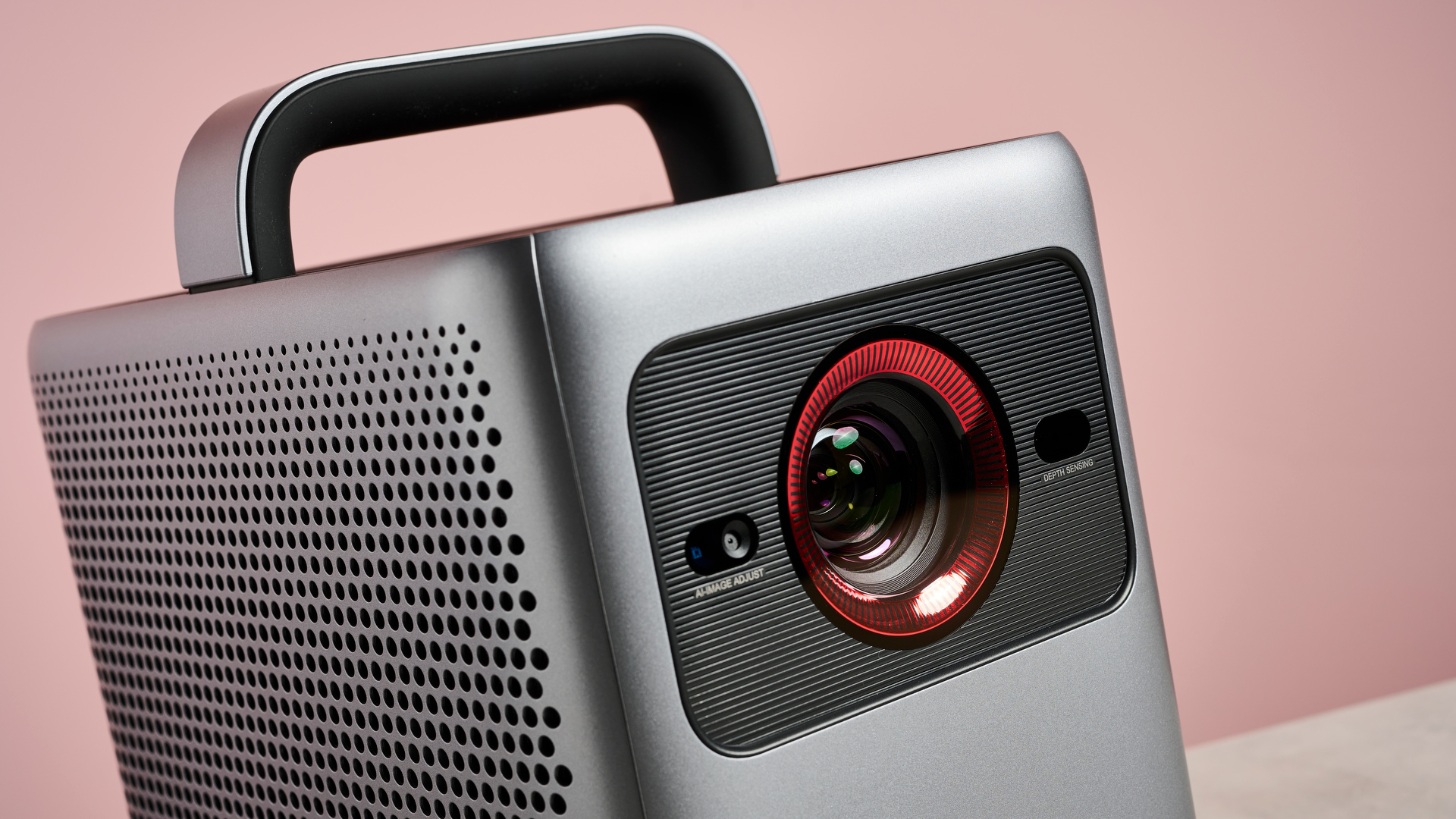
Should I buy the Anker Nebula Cosmos 4K SE?
Buy it if
You don’t want to spend several thousand
While $1,299.99 / £1,299.99 is still a high price to pay, you get a lot of bang for your buck with the Cosmos 4K SE. Built-in Google TV, competent auto-correction features, and impressive imagery and sound are well worth the cost if you can spare it.
You want popular apps at your fingertips
The advantage of the built-in Google TV is the ease of the interface and the distinct lack of bug and lag-related issues that I’ve experienced with so many Android-based OS. It’s satisfyingly simple to get set up, so you can get to streaming content without the frustration.
You want an immersive cinematic experience
Picture this, relaxing comfortably in the dark, bag of popcorn in hand, as you watch a feature-length film in 4K on the big screen, all from the comfort of your own home. The stunning visuals and immersive sound the 4K SE delivers are worth splashing out on.
Don't buy it if
You want the big picture but have a small space
A short-throw projector the Cosmos 4K SE is not. You need at least 5.5ft / 1.69m of space to achieve a screen size over 60 inches, which, for me personally, is a must, as I love the big-screen experience.
You want an easily portable projector
While it wouldn’t be difficult to maneuver for most, this projector is big and weighty. The carry handle makes life easier, but if you’re going away for the weekend it’s going to take up valuable trunk space, and there’s no way you’d want to lug it around on public transport.
You don’t want to be kept in the dark
Although Anker claims that you can watch a 60-inch projection in a well-lit room and indirect daylight, I found that watching with just one small window a few feet from the projection on an overcast day caused the quality to reduce drastically, the projected image looked washed out, and darker scenes that lacked contrast in optimum conditions became practically invisible.
Anker Nebula Cosmos 4K SE review: also consider
| Header Cell - Column 0 | Anker Nebula Cosmos 4K SE | Anker Nebula Cosmos Laser 4K | Hisense PX3-Pro | LG CineBeam Q |
|---|---|---|---|---|
Price | $1,299.99 / £1,299.99 | $1,999.99 / £1,799.99 | $3,499 / £2,499 | $1,299 / £1,299 / AU$2,499 |
Screen sizes supported | 20 – 200 inches | 60 – 150 inches | 80-150 inches | 50 –120 inches |
Brightness (specified) | 1,800 ANSI Lumens | 2,200 ANSI Lumens | 3,000 ANSI Lumens | 500 ANSI lumens |
HDR support | Yes, Dolby Vision | Yes | Yes, Dolby Vision | Yes |
Optical technology | HybridBeam (Laser+LED) | Laser DLP | 3-laser DLP | RGB laser DLP |
4K | Yes | Yes | Yes | Yes |
Speaker | 15W ×2 (Dolby Audio) | 10W ×2 + 5W ×2 (Dolby Atmos) | Dolby Atmos and IMAX Enhanced for DTS | 3-watt mono speaker |
OS | Google TV | Android TV 10.0 (dongle) | Google TV | WebOS |
Connections | Bluetooth, HDMI 2.1(eARC), HDMI 2.1, USB-A, AUX, AC-in | Bluetooth, HDMI 2.0 (ARC), USB-A, AUX, AC-in | 2 x HDMI 2.1, HDMI 2.0 (eARC), 2 x USB-A, optical digital audio out, 3.5mm audio out, Ethernet | Bluetooth, HDMI, USB-C (display, power) |
Dimensions | 10.4 x 8.7 x 6.5 inches / 264 x 221 x 165mm | 10.4 x 8.7 x 6.5 inches / 264 x 221 x 165 mm | 21.7 x 11.7 x 4.8 inches / 550 x 300 x 122mm | 5.3 x 3.1 x 5.3 inches / 135 x 79 x 135mm |
Weight | 9.9 lb / 4.5 kg | 10.7 lb / 4.9 kg | 19.8 lb / 9 kg | 3.3 pounds / 1.5 kg |
Anker Nebula Cosmos Laser 4K
The 4K SE’s older sibling is almost identical in size and weight, and while it doesn’t possess some of the more desirable features, such as Dolby Vision and Google TV, it’s brighter and utilizes laser DLP optical technology, rather than a laser / LED hybrid. Check out the full Anker Nebula Cosmos Laser 4K review.
Hisense PX3-Pro
A far pricier option, but if you want a top-quality, ultra-short-throw projector, then this could be the one for you. It’s not portable like the other alternatives listed here, but it performed well in various lighting conditions, delivered bright, rich colors, and a higher standard of contrast when compared to the 4K SE. Why not take a look at the Hisense PX3-Pro review to find out more.
LG CineBeam Q
If you want a projector that’s not a space invader, and can even make an attractive addition to your decor, then the LG CineBeam Q would be a good fit. While it’s not perfect, with limited brightness and poor audio quality, it looks stylish, projects in good-quality 4K, and can provide access to popular streaming apps, whether you’re watching at home or on your travels. If this has piqued your interest, there's plenty more detail in the full LG CineBeam Q review.
How I tested the Anker Nebula Cosmos 4K SE
- Tested at home and in the TechRadar music and TV testing rooms
- Tested in different lighting conditions
- Measurements were made using Calman color calibration software
I got the Anker Nebula Cosmos 4K SE setup and had an explore around the available features, apps, and settings. I tried out the various display presets to determine the most satisfying option for casual viewing. I watched several films, series, and online content to establish how well the projector handled the different aesthetics. I tested the visibility of the projection by watching in total darkness, minimal lighting, and daylight.
My colleague, TV expert James, and I, measured the white balance (grayscale), gamma, and color point accuracy using Portrait Displays’ Calman color calibration software. The results provided Delta-E values (the margin of error between the test pattern source and what’s shown on-screen) for each category, providing us with figures to assess the projector’s overall accuracy.
We also ran tests to obtain measurements of the peak light output in both standard and high dynamic range modes, and measured the coverage of DCI-P3 and BT.2020 color space, to obtain readings that determine how well the projector can render the extended color range. Finally, we measured the contrast ratio, determining the brightest white to the darkest black that the projector is capable of displaying, and the input lag, which is an important reading if you’re looking for a gaming projector in particular.
Read more about how we test.
First reviewed October 2024

Cesci is a Reviews Staff Writer for TechRadar. She writes in-depth reviews based on her real-world testing across a variety of categories, but has a particularly keen interest in home tech, and has written features and reviews about gadgets ranging from headphones to smart lights to graphics tablets. She also has a broad range of experience from working in different industries, from sustainable materials and packaging to skin care.
